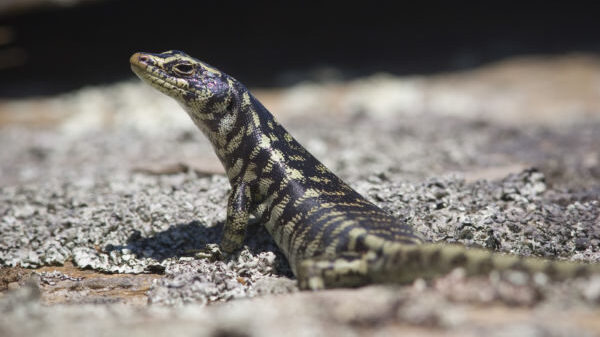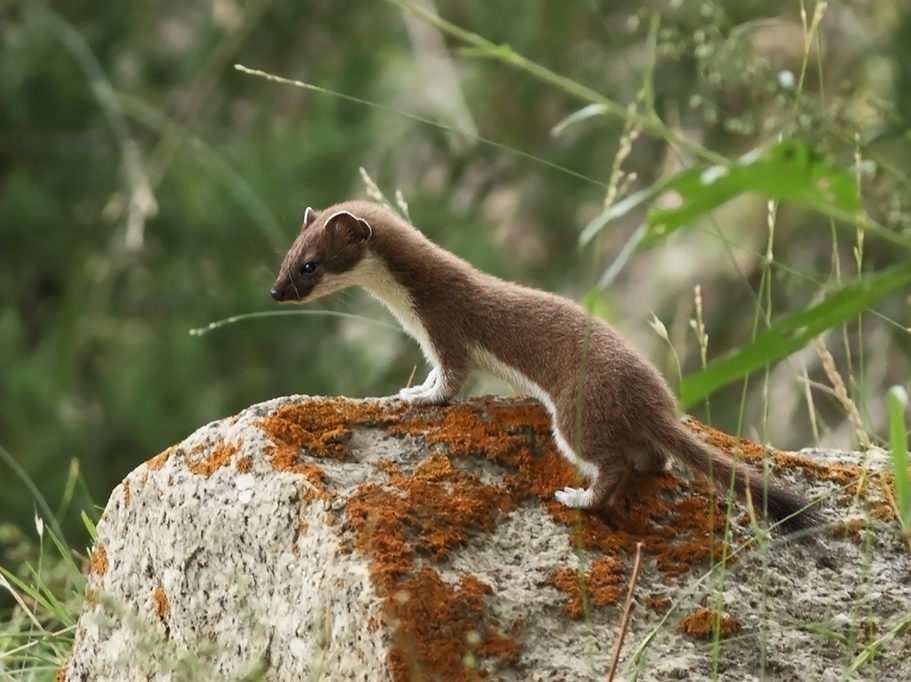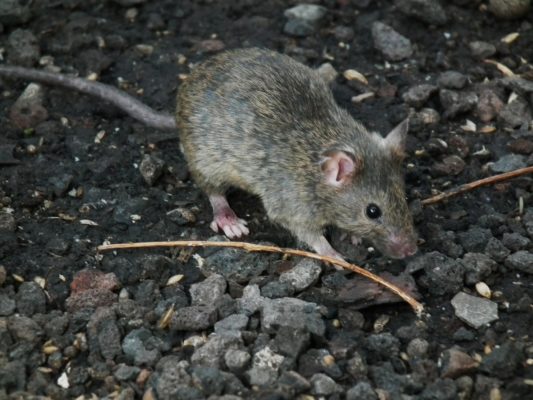
A modified habitat may provide more protection from modern-day introduced predators than does the native habitat the animal originally evolved in. In some situations, the presence of grazing livestock may actually be beneficial.
It’s never simple in nature. Many factors are at play and sometimes the ‘obvious’ answer isn’t the correct one – which is where good science and an open mind come into play…
Jewelled geckos (Naultinus gemmeus) living on the Otago Peninsula now co-exist with grazing livestock and introduced rodents. Carey Knox, Alison Cree and Philip Seddon from the University of Otago looked at how those interrelationships played out in two different habitats: Coprosma spp. shrubland and regenerating kānuka (Kunzea ericoides) forest.

They examined rat and gecko population numbers when each of these habitats was either grazed by livestock or ungrazed and, at the start of the study expected… “livestock grazing to prevent the proliferation of rank grass (which is often associated with high rodent densities) and thereby reduce the frequency of predation by rodents on Jewelled Geckos. Thus, we predicted activity of rodents to be lower, and density of Jewelled Geckos higher, at sites grazed by livestock.”
Rat and mouse activity was estimated using tracking tunnels and rodent activity was, significantly higher at ungrazed sites in both habitats – so no surprises there. The density of jewelled geckos in the two habitats was quantified using visual searches, photography and mark-recapture techniques.
In the grazed, coprosma habitat, where stock prevented the growth of rank grass and rodent numbers were therefore lower, jewelled gecko numbers were over four times higher than in the equivalent ungrazed coprosma site. Again – it was as the researchers expected – grazing was indirectly helping the jewelled geckos.
At the two kanuka sites, however, the opposite was true. Even though rodent activity was higher in the ungrazed regenerating kanuka forest, there were also significantly more jewelled geckos living there, than at the grazed kanuka site. Other factors were at play. The grazing itself may have been having a detrimental effect on geckos in the kanuka habitat “possibly,” say the researchers, “by removing thermal refugia.”
So does removing grazing livestock benefit native wildlife? It seems there is no simple ‘yes’ or ‘no’ answer. It depends on the requirements of the wildlife species which live there and the plant species that make up the regenerating scrub habitat.
This research is published in the Journal of Herpetology and available for purchase: Direct and Indirect Effects of Grazing by Introduced Mammals on a Native, Arboreal Gecko (Naultinus gemmeus) (2012)
When a group of scientists from Landcare Research (Dunedin and Alexandra) studied indigenous and exotic birds, terrestrial invertebrates and ground-dwelling lizards in 100-ha blocks in a dryland landscape, they had some initial ideas of what they thought they would see. For the most part, their expectations appear to have been met.
The three Central Otago study blocks represented three levels of woodiness (grassland, mixed grassland–shrubland, and shrubland) and the researchers hypothesised that shrublands would support invertebrates and indigenous bird species additional to those in grasslands – increasing the overall species diversity of the landscape.
They also expected that shrublands “would have higher indigenous dominance of bird composition than grassland. We also expected that vegetation woodiness would affect the taxonomic composition of assemblages of indigenous and exotic birds and of ground-dwelling invertebrates.” They did not, however, expect the shrubland to have an overall effect on indigenous dryland ground-dwelling lizards as the lizards were expected to be regulated by other microhabitat characteristics.

Results did indeed confirm that shrubland supported indigenous forest bird species complementary to those present in grasslands and “block-level woodiness was a primary predictor of indigenous, but not exotic, bird assemblages.” While the ground beetle species found within blocks also varied significantly depending on local woodiness, this difference was not seen with invertebrate species overall. As predicted, “shrubland development had little effect on common ground-dwelling lizards, which showed strong microhabitat preferences and favoured habitats dominated by indigenous plant species”.
Overall, the researchers concluded, “that sizeable (i.e. >1 km2) areas of shrubland vegetation enhanced the diversity of indigenous birds and of ground invertebrate orders present at a landscape scale. Both grassland and shrubland habitat patches in drylands supported indigenous ground-dwelling lizards, but lizards may be vulnerable to habitat modifications that reduce indigenous plant dominance.”
The full article is freely available from the New Zealand Journal of Ecology: Effects of secondary shrublands on bird, lizard and invertebrate faunas in a dryland landscape (2014)
Grant Norbury et al (Landcare Research and University of Auckland) also looked at a grassland/shrubland ecosystem. They, however, found some surprising results in their study of how interactions of invasive mammals and habitat modification affect indigenous fauna.
The researchers looked at a number of interacting invasive mammals, including top predators (cat, ferret, stoat), introduced herbivores (rabbit, hare) and an introduced insectivore (hedgehog). They experimentally manipulated the relationships between these species and measured their effects on indigenous lizards and invertebrates and on an invasive mesopredator – the mouse.
The grassland/shrubland ecosystem where the study was carried out had been subjected to two types of habitat modification: widespread introduction of high-seed-producing pasture species, and areas of land use intensification by fertilization and livestock grazing. In order to quantify food productivity for both indigenous and invasive fauna, the researchers measured both pasture biomass and seed and fruit production by grasses and shrubs.
A number of interactive effects were observed, including:
• Lizards increased on only one of the two sites following top predator suppression;
• Invertebrates did not increase on either site;
• On the site where lizards did not increase, mesopredator release of mice was evident, suggesting negative effects of mice on lizard populations;
• High mouse abundance occurred only on the predator-suppression site with regular production of pasture seed, indicating that this food resource was the main driver of mouse populations;
• Removal of herbivores increased pasture and seed production, which further enhanced ecological release of mice, particularly where pasture swards were overtopped by shrubs;
• Nearby fertilized pastures boosted rabbit numbers and the associated top predators.
Thus, while other studies have shown that suppression of invasive predators and retiring land from grazing can benefit indigenous species – it is not always that straightforward in a complex landscape – particularly when the indigenous fauna (eg lizards and invertebrates) are vulnerable to mesopredators such as mice. The resulting vegetation changes and the complex interactions of invasive species – which also prey on each other – can actually block recovery of lizards and invertebrates, if, for example, the changes allow mesopredators such as mice to increase in number.
This article is published in Ecological Applications. The abstract is freely available and the full article available for purchase. Invasive mammals and habitat modification interact to generate unforeseen outcomes for indigenous fauna. (2013)

